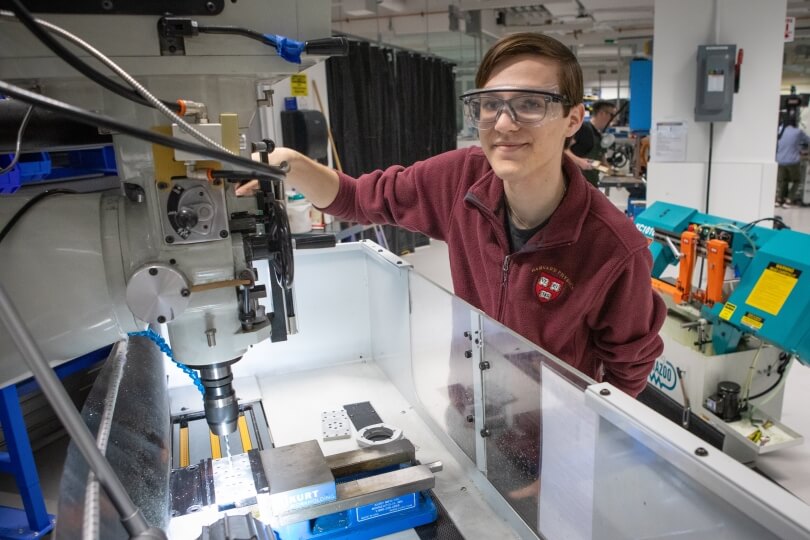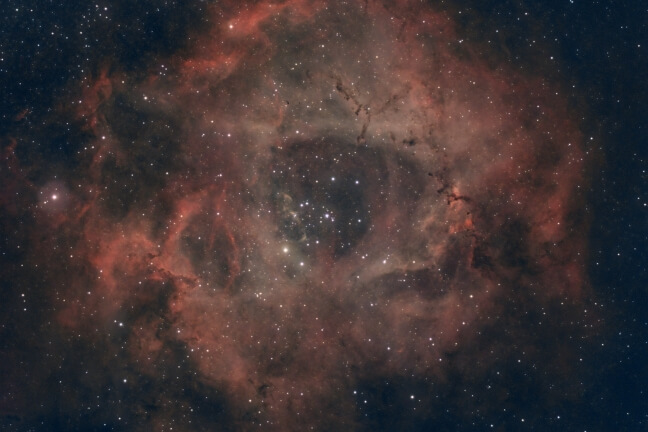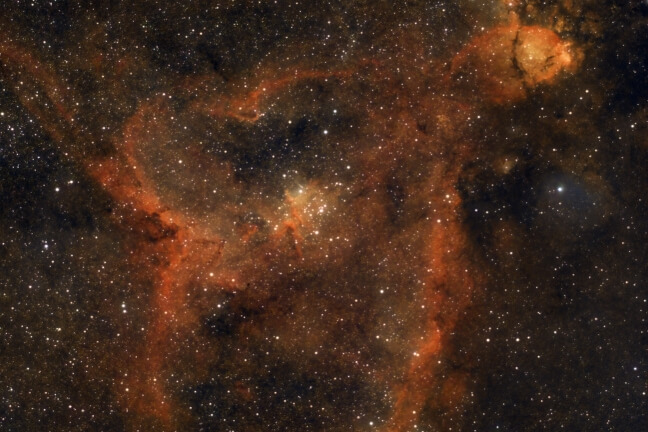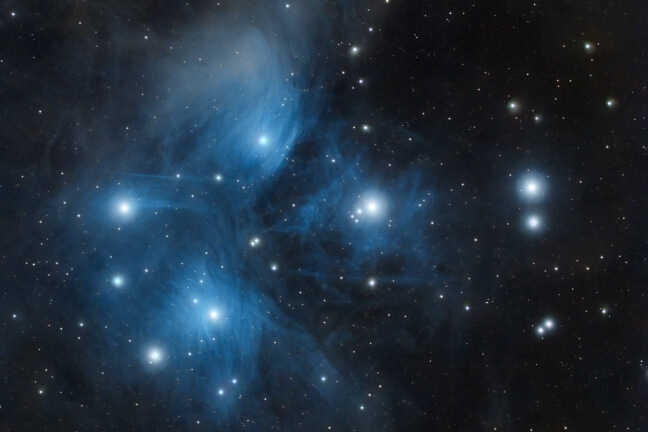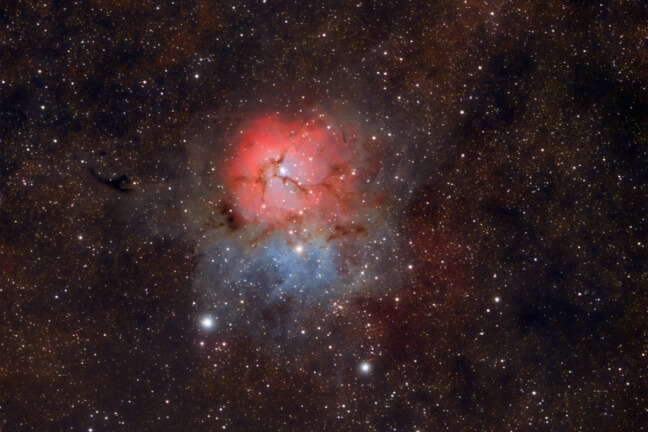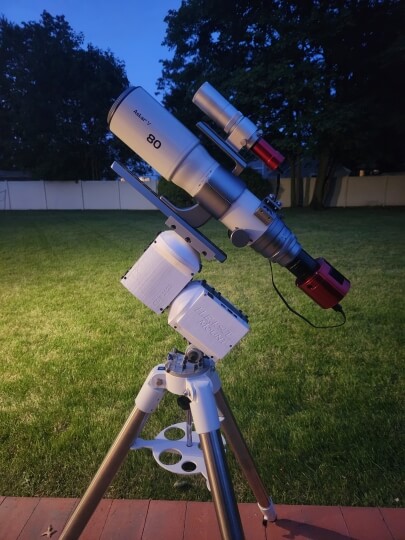News
Christopher Prainito, A.B. '26, works in the SEAS Design and Fabrication Instructional Machine Shop (Eliza Grinnell/SEAS)
Point a camera at the night sky, and not much will happen. You’ll get a picture of stars, sure, but it’ll just be a black image with a bunch of white dots.
“You’ll see plenty of stars, but you won’t see too much complex structure, because the surface brightness of the nebulae and galaxies are too dim to be able to see with such a short exposure,” said Christopher Prainito, a third-year mechanical engineering and physics dual-concentrator at the Harvard John A. Paulson School of Engineering and Applied Sciences (SEAS).
To get a much cooler, more detailed stellar image, you need to lengthen your camera’s exposure, which allows in more light. But that brings up another challenge: the Earth is constantly rotating. So while the sky might not seem to move to the naked eye, a camera pointed at a specific spot won’t actually be able to focus on it for a long exposure.
“You’ll see what are called star streaks, where the dot moves across the image,” said Prainito.
Astrophotographers solve this problem with a camera mount that can automatically compensate for the earth’s spin, called an equatorial mount. Commercial mounts exist, but they often cost thousands of dollars, making them inaccessible to many amateur photographers.
Prainito spent his summer using SEAS resources to fabricate his own equatorial mount. His device allowed him to leave his camera outside overnight, then come back the next morning to see the results.
“Everyone sees pictures of space at some point, but you don’t really realize how accessible it is for amateur astronomers to be able to take really nice pictures from Earth,” he said.
The Rosette Nebula, photographed using the Harvard-Engineered Imaging System and Telescope Mount (Christopher Prainito)
The Heart Nebula, photographed using the Harvard-Engineered Imaging System and Telescope Mount (Christopher Prainito)
Prainito first became interested in astrophotography two years ago, but quickly discovered he needed a solution to the challenge of star streaks. A YouTube video by an MIT student who built his own mount inspired Prainito to build his own as well, and he spent much of his spring semester getting trained in the Design and Fabrication Instructional Machine Shop so he could build it over the summer of 2024.
“I’d done some smaller projects before, mostly electronics-focused,” he said. “I’d never used water jets before. I’d never used a mill or lathe. I learned all the tools the semester before, so over the summer I was able to access the machine shop and figure it out as I went. I was already familiar with 3D printing, but this was my first time working with printed circuit boards. It was a very large learning experience in a lot of different fields, but I think I came out of it with a lot better understanding of machining and design skills.”
SEAS resources played a critical role in Prainito building his device, which he called the H.E.I.S.T. Mount, which stands for “Harvard-Engineered Imaging System and Telescope Mount.” He applied for a Nectar fund, which supports individual student passion projects through the Student Experiences function of the SEAS Teaching and Learning Group. Once he was done fabricating, he finished the project using 3D printers and printed circuit board assembly in the REEF Makerspace.
The Pleiades star cluster, photographed using the Harvard-Engineered Imaging System and Telescope Mount (Christopher Prainito)
The Trifid Nebula, photographed using the Harvard-Engineered Imaging System and Telescope Mount (Christopher Prainito)
“In terms of the things that I learned while actually building this device, and the experience of being able to obtain a grant from SEAS to do so, the amount of practical things that I learned is at least parallel to that of a course,” he said. “This will really help me in future courses.”
The entire project took approximately 25-30 hours to build, plus debugging the software that allowed his computer to communicate with the mount. He made sure his design was as accurate as possible before ever stepping into the machine shop, so as to hopefully minimize errors and rebuilds.
The H.E.I.S.T. (Harvard-Engineered Imaging System and Telescope) Mount, designed by Christopher Prainito, A.B. '26 (Christopher Prainito)
“In order to have a mount that’s able to precisely track the sky with the degree of accuracy that you want, you have to make sure that the mechanics are very well designed,” he said. “You don't want to have things flipping around, loose parts or things that don’t mesh correctly. It’s about making sure that all of these components fit together in as small a package as possible, so it maintains a light weight, but also has really high durability, because at the end of the day it’s going to be outside for the entirety of its life.”
With his mount, Prainito was able to photograph a variety of stellar phenomena, including the Andromeda Galaxy, the Rosette Nebula, and the Pleiades star cluster. The majority of images were taken from his backyard on Long Island, though he also shot some on a trip to the Great Smoky Mountains in Tennessee.
“Once I get home, more or less every clear night, I’m outside setting up my equipment to take pictures of something new,” he said.
Prainito’s interest in space extends to his extracurricular activities. He’s the chief engineer for the Harvard Satellite Team and the equipment manager for the Student Astronomers at Harvard-Radcliffe, which became a SEAS-affiliated student organization this year. Building the H.E.I.S.T. Mount has given Prainito a new appreciation for machining and fabrication, which is sure to benefit both his extracurriculars and academics in his third and fourth years at SEAS.
“If you find something you’re interested in that you want to plan out and build, it’s definitely a good experience,” he said. “Just having machining experience is tremendously helpful for a lot of things mechanical engineering-related.”
Topics: Active Learning Labs, Materials Science & Mechanical Engineering, Undergraduate Student Profile
Cutting-edge science delivered direct to your inbox.
Join the Harvard SEAS mailing list.
